Abstract
To investigate the regulatory interactions of amino acid transport and incorporation, we determined the effects of dipeptides on amino acid uptake by bacteria in an estuary and a freshwater lake. Dipeptides noncompetitively inhibited net transport and incorporation of amino acids into macromolecules but had no effect on the ratio of respiration to incorporation. Nearly maximum inhibition occurred at peptide concentrations of <10 nM. In contrast, the initial uptake rate of glycyl-[14C]phenylalanine was not affected by glycine or phenylalanine. Net amino acid transport appeared to be inhibited by the increased flux into the intracellular pools, whereas the incorporation of labeled monomers into macromolecules was isotopically diluted by the unlabeled amino acids resulting from intracellular hydrolysis of the dipeptide. Chloramphenicol, sodium azide, and dinitrophenol all inhibited the initial uptake rate of leucine and phenylalanine. These results suggest that in aquatic environments amino acids are taken up by active transport which is coupled closely to protein synthesis.
Full text
PDF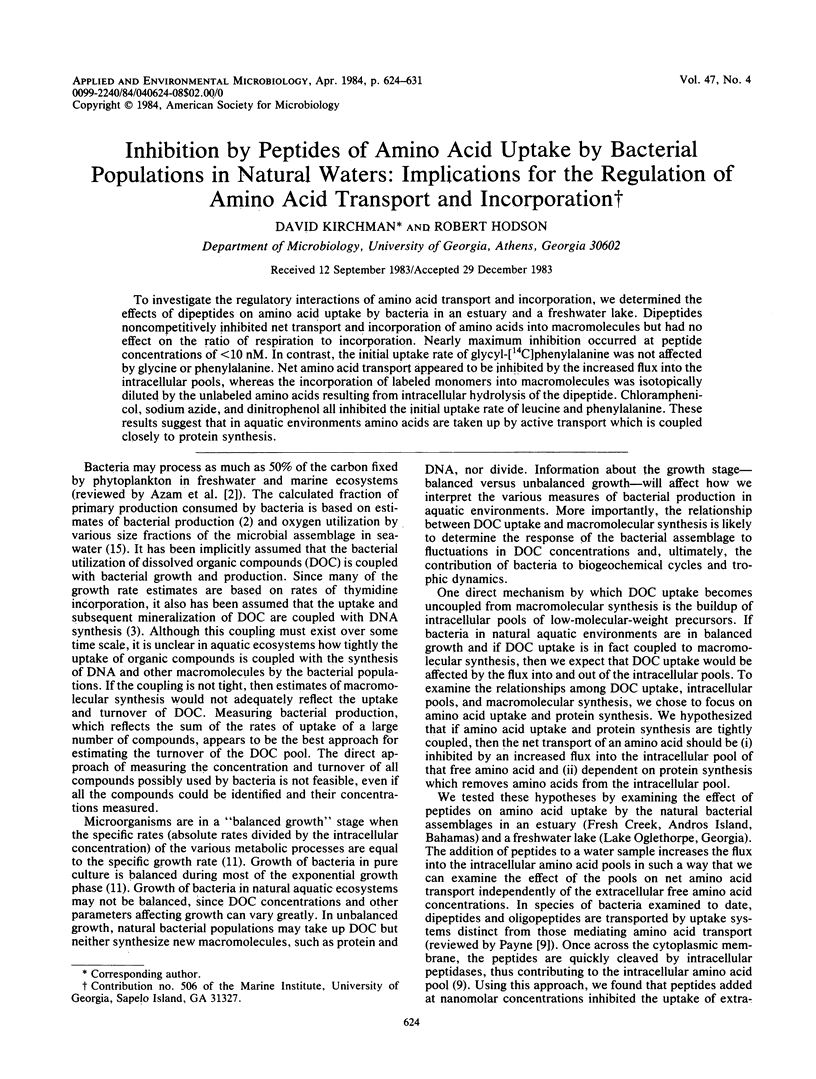
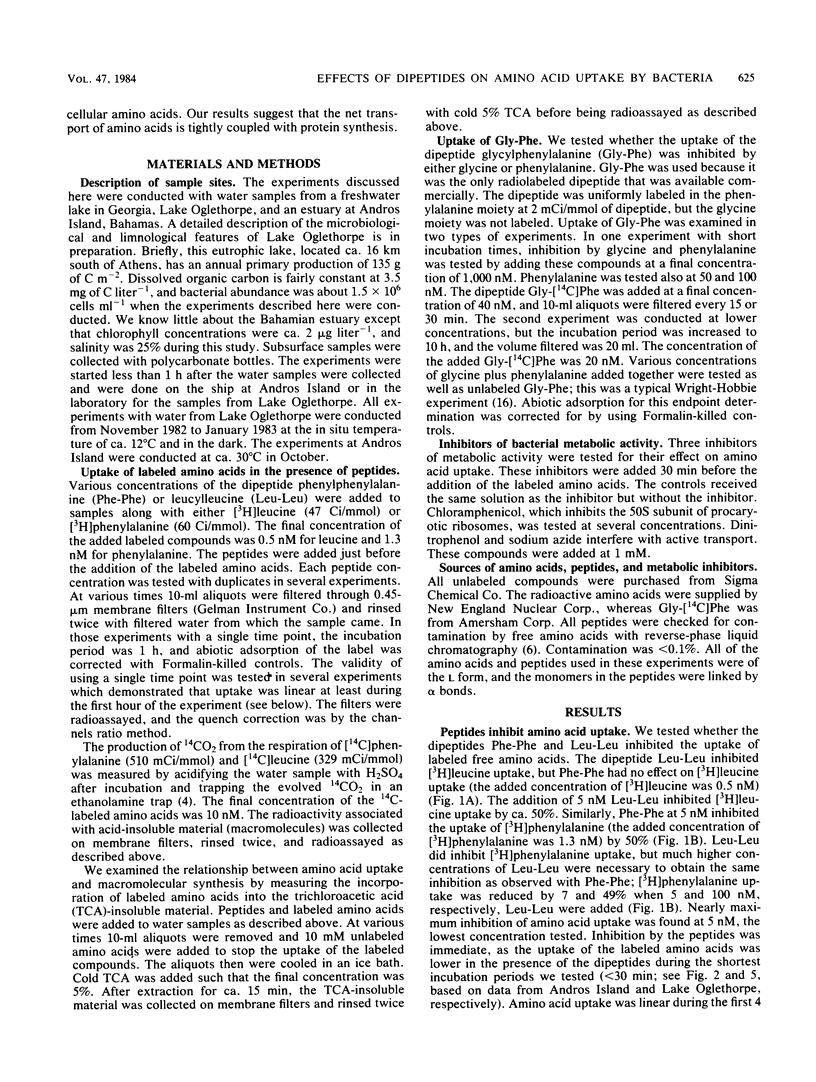


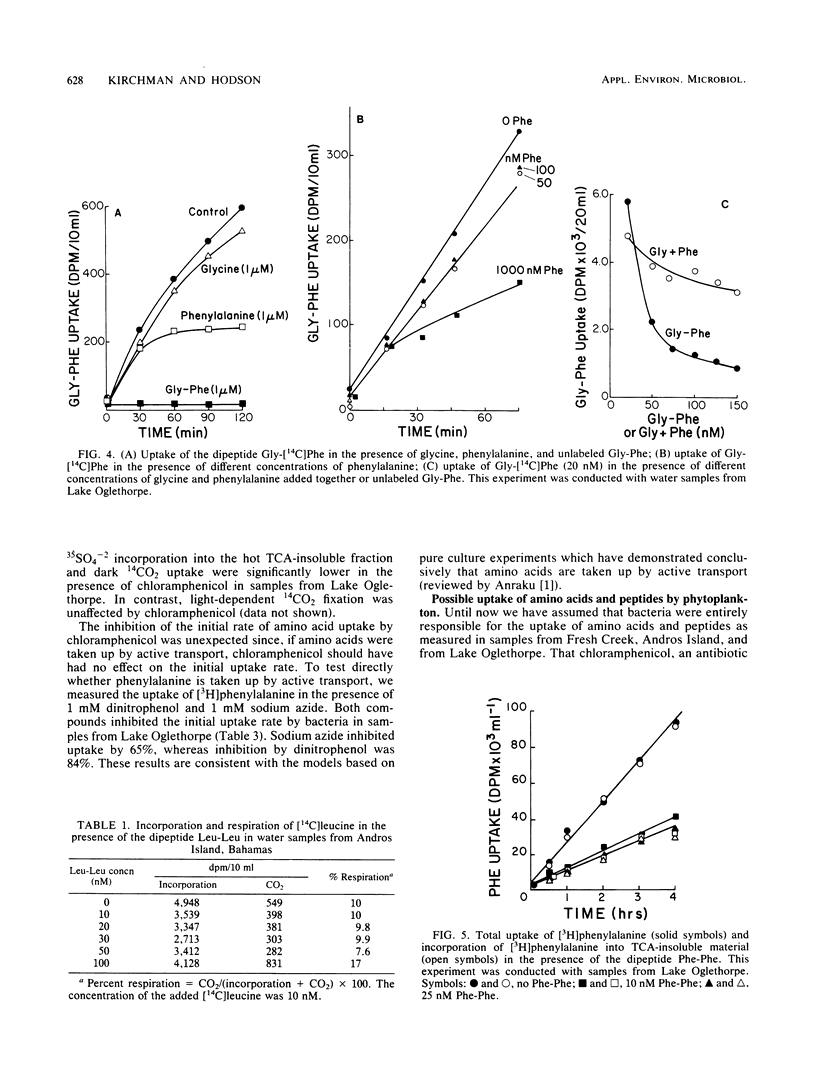
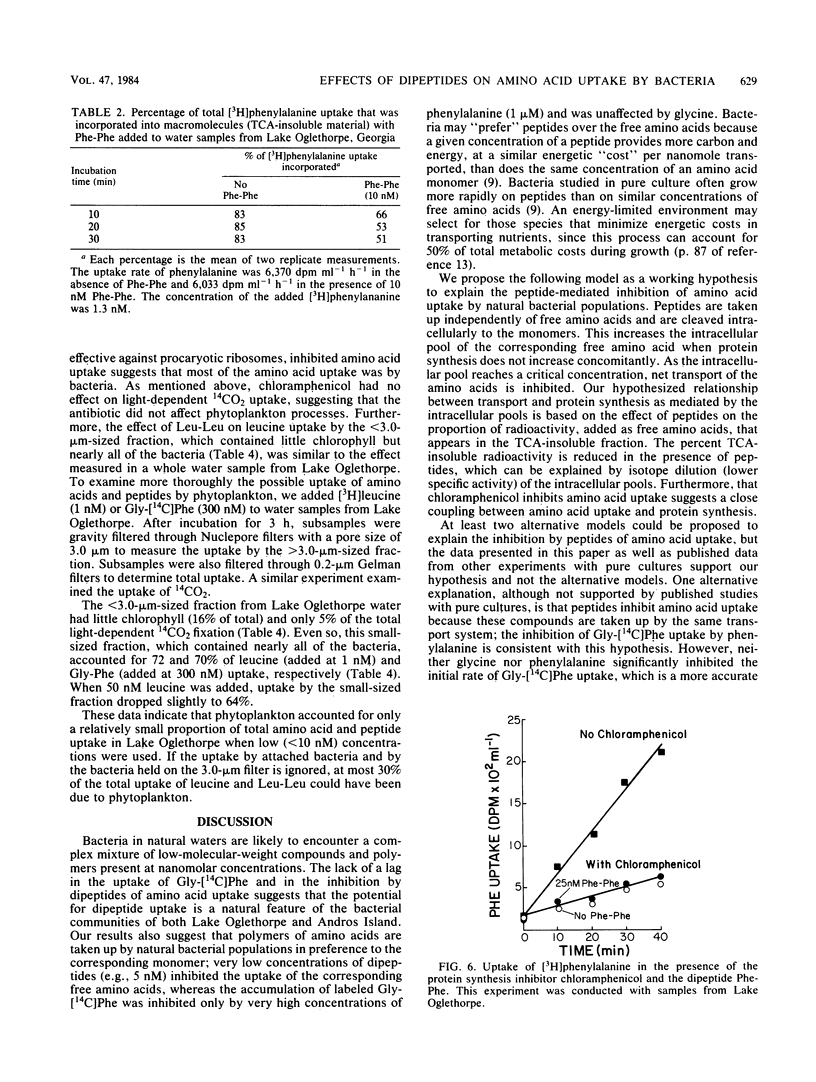
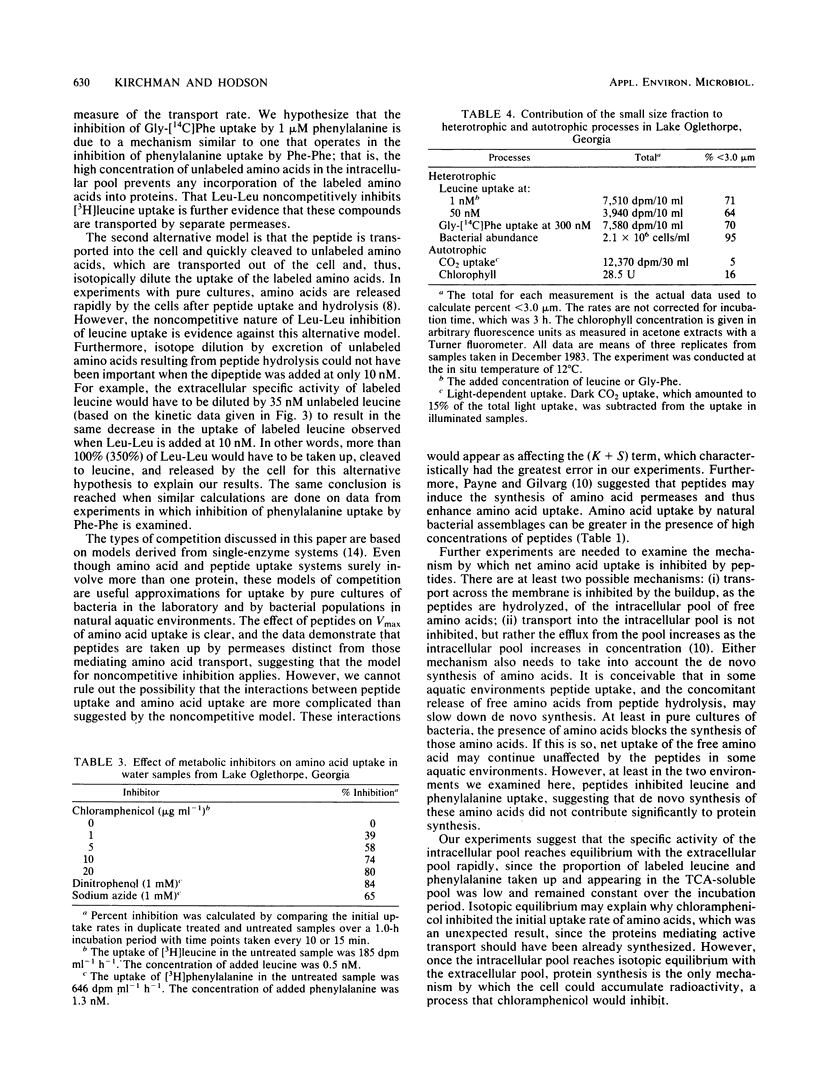
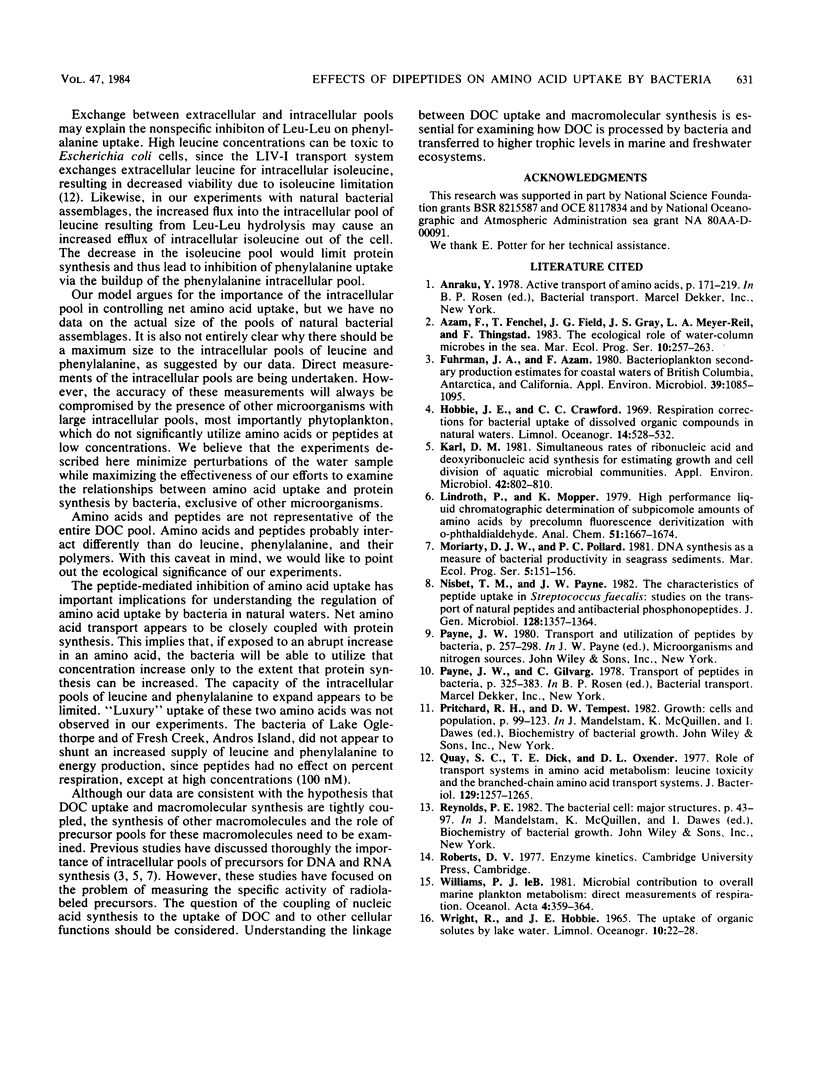
Selected References
These references are in PubMed. This may not be the complete list of references from this article.
- Fuhrman J. A., Azam F. Bacterioplankton secondary production estimates for coastal waters of british columbia, antarctica, and california. Appl Environ Microbiol. 1980 Jun;39(6):1085–1095. doi: 10.1128/aem.39.6.1085-1095.1980. [DOI] [PMC free article] [PubMed] [Google Scholar]
- Karl D. M. Simultaneous rates of ribonucleic Acid and deoxyribonucleic Acid syntheses for estimating growth and cell division of aquatic microbial communities. Appl Environ Microbiol. 1981 Nov;42(5):802–810. doi: 10.1128/aem.42.5.802-810.1981. [DOI] [PMC free article] [PubMed] [Google Scholar]
- Nisbet T. M., Payne J. W. The characteristics of peptide uptake in Streptococcus faecalis: studies on the transport of natural peptides and antibacterial phosphonopeptides. J Gen Microbiol. 1982 Jun;128(6):1357–1364. doi: 10.1099/00221287-128-6-1357. [DOI] [PubMed] [Google Scholar]
- Quay S. C., Dick T. E., Oxender D. L. Role of transport systems in amino acid metabolism: leucine toxicity and the branched-chain amino acid transport systems. J Bacteriol. 1977 Mar;129(3):1257–1265. doi: 10.1128/jb.129.3.1257-1265.1977. [DOI] [PMC free article] [PubMed] [Google Scholar]


